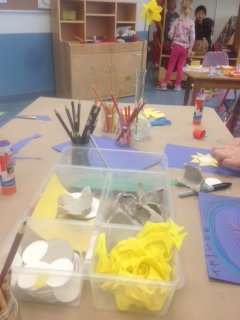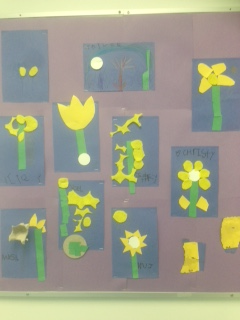In
our classroom we are always looking at how to incorporate the outdoors into the
classroom. One of the ways we have been doing that is by bringing in the
planter boxes from the deck and discovering what happen to the bulbs we had
planted back in the fall.
We
showed the children the bulbs they had help planted back in the Fall to remind
them what they looked like.
We then showed the children the planter box, most of the children were amazed at how the flowers had grown from a bulb. How did the petals fit inside the blub? How did the flower get to be yellow?
We
thought to further our observation of the planters box we would put some
material that would inspire the children to create their own art with the
planter box inside the classroom.
We
admire the uniqueness that inspirational art brings to the classroom as seen in
the picture above. Some children were inspired to make the daffodils whilst
others prefer to do one or two petals of a flower, or maybe it could be a
daffodil.
The following week I was “inspired” after seeing how much creativity the planter box bought into the classroom, on one of my many “runs”, I came across this fallen branch that I thought the children could again discuss and enjoy at the art table.
Inspirational
Art brings uniqueness and creativity in children. We don’t always see what the
child sees, allowing inspiration in the classroom demonstrates his or her
creativeness and interest that can reflect on how each child learns about the
world around them.
Until
next post
Jess
















Comments